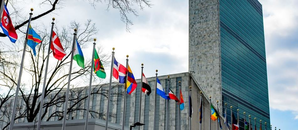United Nations (IANS) India remains a “strong” recipient of foreign investments as multinationals recognise it as an alternative manufacturing base for supply chains, according to the United Nations.
“India is benefiting by growing interest from multinationals, which see the country as an alternative manufacturing base in the context of developed economies’ supply chain diversification strategies,” according to the Financing for Sustainable Development 2024 Report.
The report released on Tuesday said that in contrast to large swathes of the developing countries, “investment in South Asia, particularly in India, remains strong.”
While discussing India’s role for multinationals as an “alternative manufacturing base,” the report did not directly mention China, which is the motivating factor behind the development because of geopolitical issues.
In contrast to India and some other countries, the report said the developing world as a whole was facing a “sustainable development crisis” because of “staggering debt burdens and sky-high borrowing costs”.
These “prevent developing countries from responding to the confluence of crises they face,” it said.
Deputy Secretary-General Amina J. Mohammed said, “We are truly at a crossroads and time is running out. Leaders must go beyond mere rhetoric and deliver on their promises. Without adequate financing, the 2030 (UN sustainable development) targets cannot be met.”
“We’re experiencing a sustainable development crisis, to which inequalities, inflation, debt, conflicts and climate disasters have all contributed,” she added while speaking at a news conference on the report’s release.
Mohammed said that the global financial institutions created after World War II were no longer relevant and needed urgent reforms to meet the contemporary challenges.
The report said that New Development Bank (NDB), created by BRICS is planning to issue between 2022 and 2026, 30 per cent of its loans in national currencies, including Indian rupee-denominated bonds.
The report added that “urgent steps are needed to mobilise financing at scale to close the development financing gap, now estimated at $4.2 trillion annually, up from $2.5 trillion before the Covid-19 pandemic”.
It warned, “Meanwhile, rising geopolitical tensions, climate disasters and a global cost-of-living crisis have hit billions of people, battering progress on healthcare, education and other development targets.”

